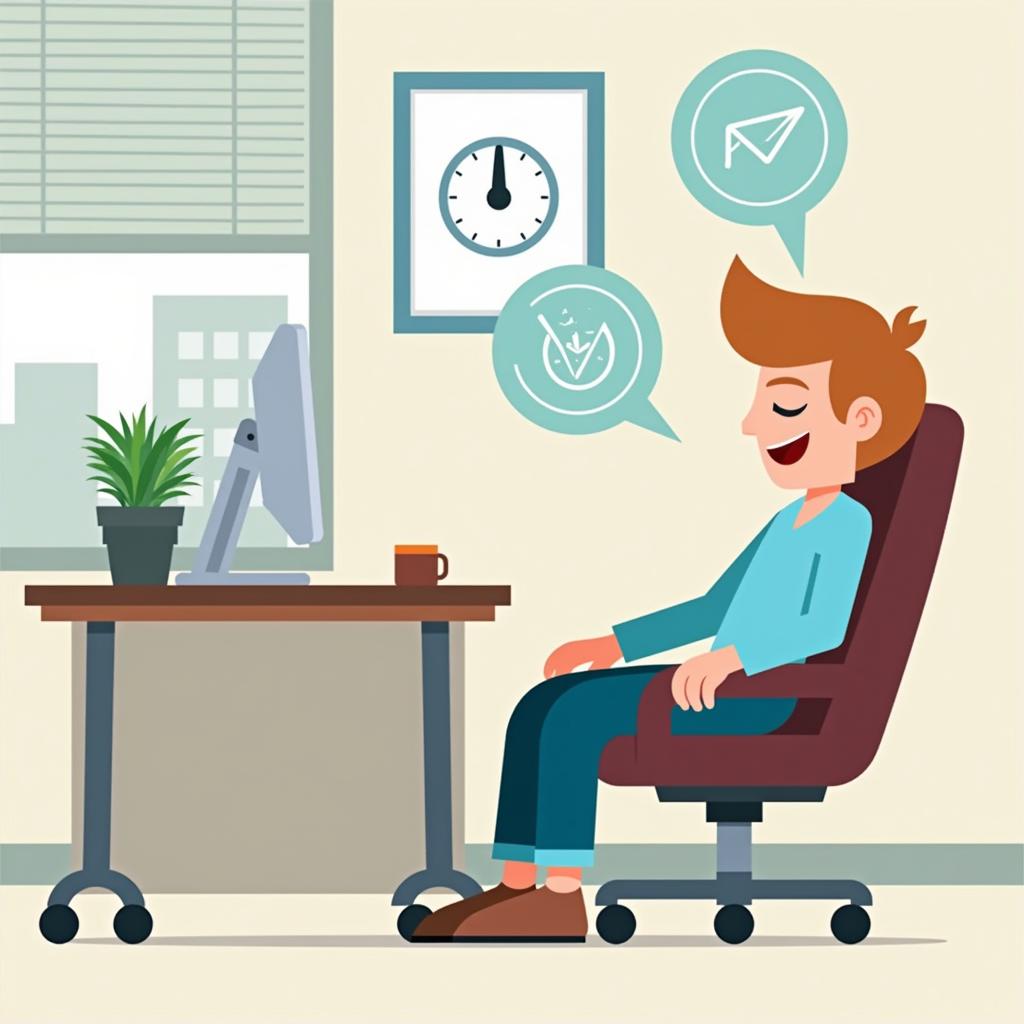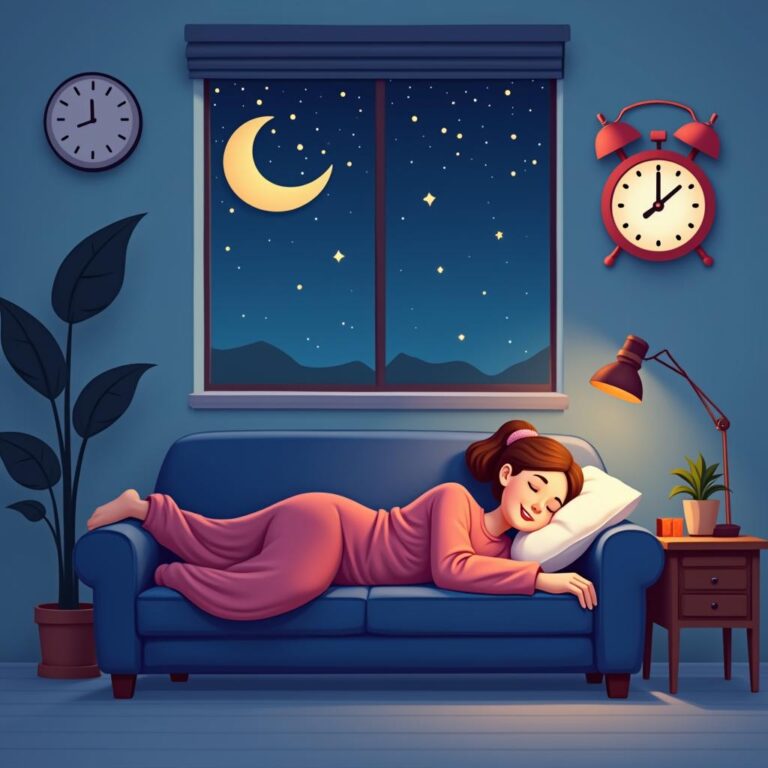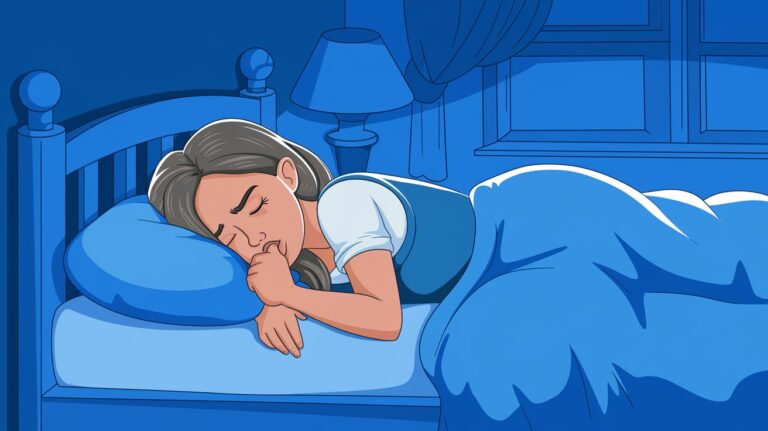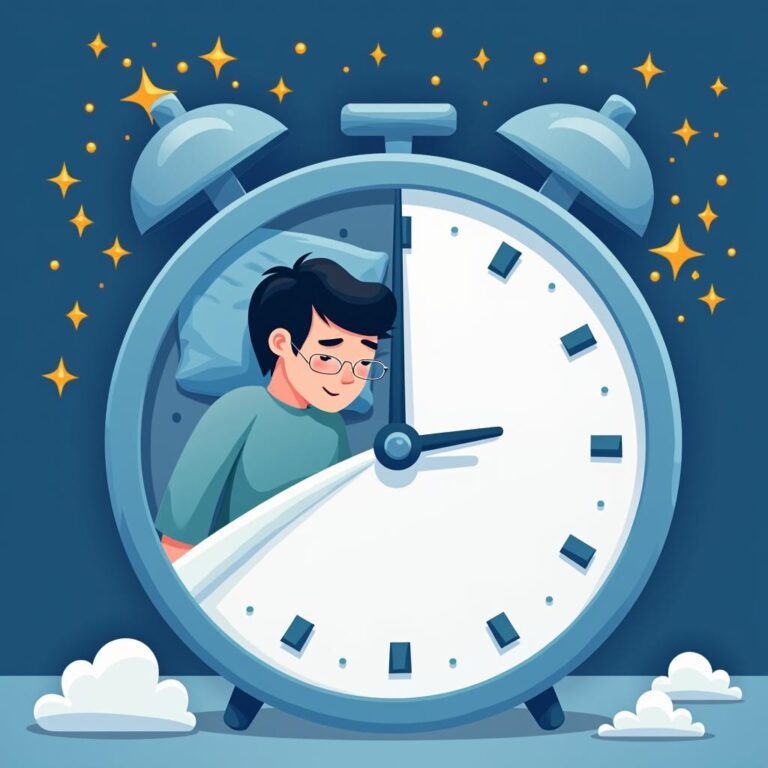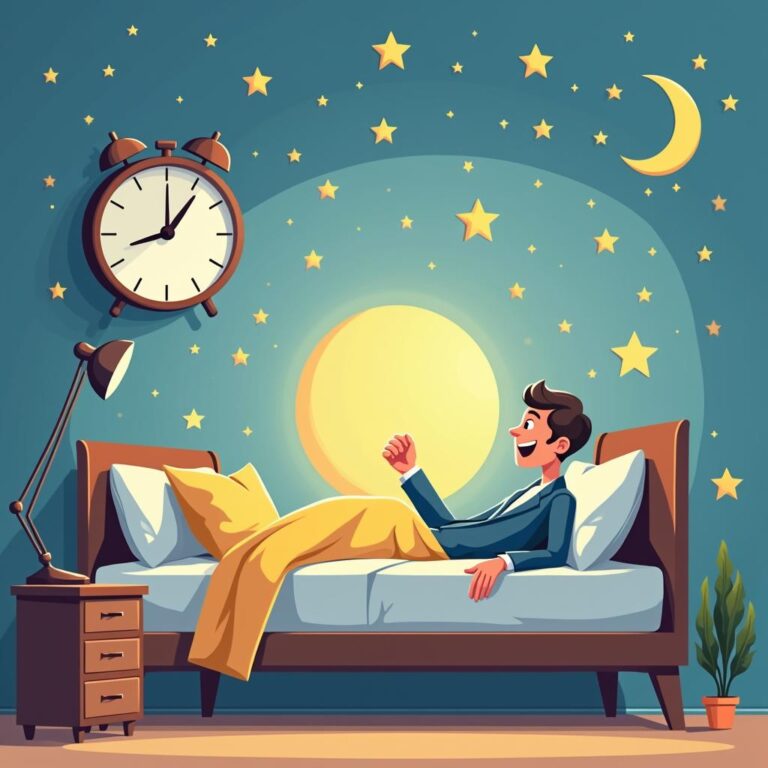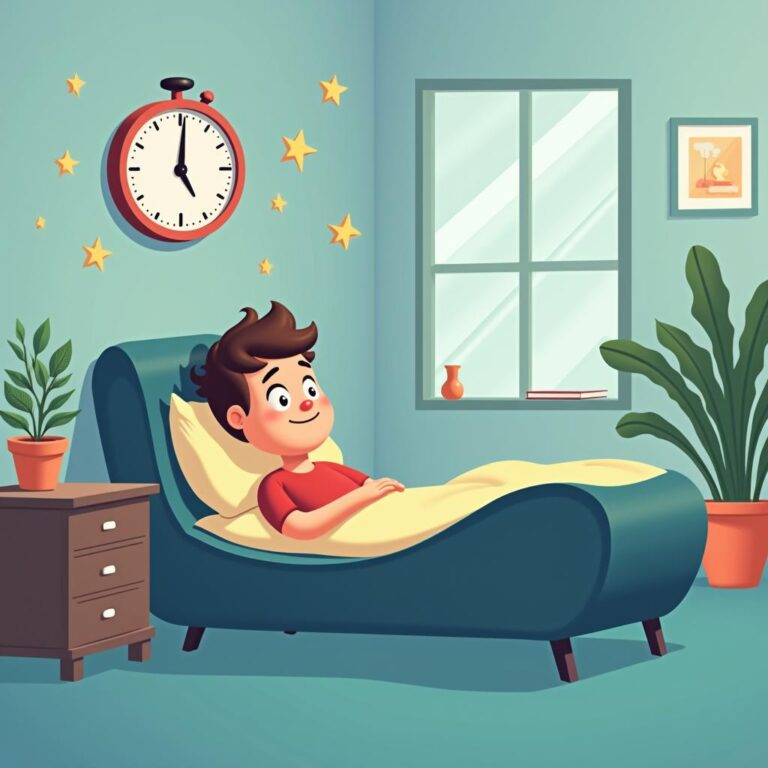Ever found yourself hitting that midday slump, struggling to stay focused? You’re not alone. Studies show that a quick power nap can increase alertness by up to 54% and improve cognitive performance by 34%! No wonder so many high achievers—from CEOs to elite athletes—swear by the power of a well-timed nap. But to truly tap into these benefits, knowing the best power nap length is essential.
While any nap can be refreshing, finding the best power nap length can make all the difference between feeling groggy or genuinely recharged. Whether you’re tackling a long to-do list or needing a boost before a big presentation, understanding how different nap lengths impact your mind and body can elevate your productivity, improve your mood, and help you feel at your best.
So, what exactly is the best power nap length? The answer depends on your goals and daily routine, but by the end of this article, you’ll know exactly how long to rest to get the maximum benefits without oversleeping. Let’s dive into the science of the perfect power nap and find out which nap length will leave you energized, focused, and ready to conquer the day!
What is a Power Nap?
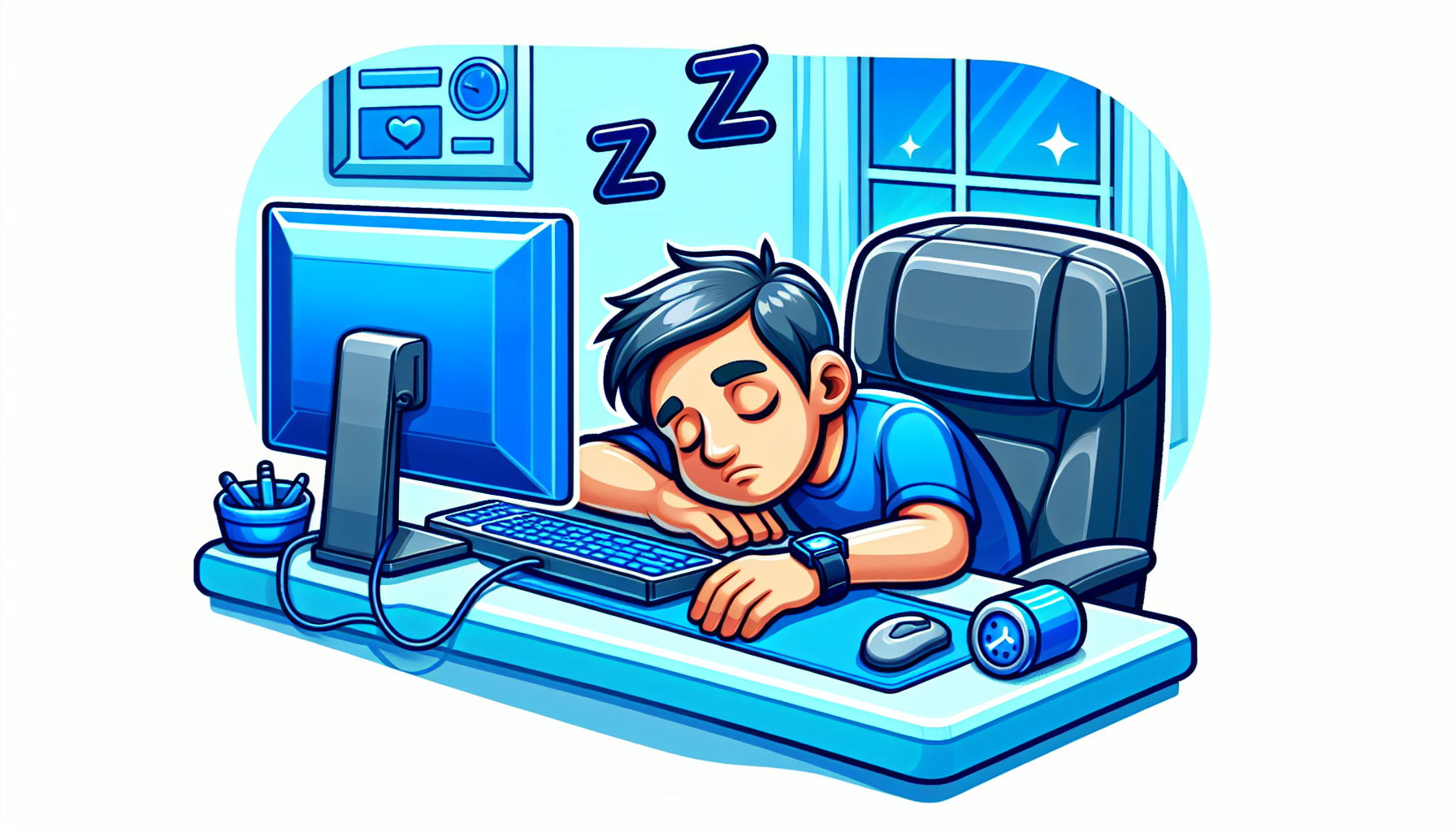
A power nap is a short, intentional period of sleep, typically lasting between 10 and 30 minutes, designed to give a quick energy and focus boost. Unlike longer naps, which might leave you feeling groggy, a power nap hits the sweet spot, delivering restorative benefits without diving too deeply into sleep cycles. This type of nap is all about efficiency—allowing you to recharge just enough to keep going strong through the day.
Power naps pack a surprising punch when it comes to physical and mental perks. Here’s why they’re so popular:
- Increased Alertness: A quick nap can restore focus and alertness, making it easier to complete tasks with fewer errors and greater accuracy.
- Mood Improvement: Power naps have been shown to lift mood by reducing stress levels, which is great for those moments when you need a mental reset.
- Enhanced Memory and Learning: Studies reveal that short naps improve memory consolidation, making it easier to retain information and learn new skills—perfect for students or professionals.
With the right power nap, you get a fast, effective way to refresh your mind, improve your performance, and take on the day’s challenges with renewed energy.
Best Power Nap Length
Experts agree that different nap lengths offer unique benefits, with the most effective power naps generally falling between 10 and 20 minutes. Research indicates that:
- 10–20 Minutes: This duration is considered the “sweet spot” for a quick energy boost. A nap of this length typically allows you to stay in the lighter stages of sleep, giving you a shot of alertness and mood enhancement without risking grogginess from entering deeper sleep stages.
- 30 Minutes: While a 30-minute nap can offer a bit more rest, studies show it may cause sleep inertia—a groggy feeling upon waking—as your body may start to transition into deeper sleep. For some, this can lead to a few minutes of disorientation before fully benefiting from the nap.
- 60 Minutes: If you have time and need deeper recovery, a 60-minute nap can provide enhanced memory retention and creativity, as it includes slow-wave sleep. However, the downside is a higher chance of grogginess upon waking.
Determining the optimal power nap duration isn’t universal, as it varies based on personal requirements, daily routines, and specific objectives. If you’re looking for a quick boost to enhance your energy and productivity during the day, a nap lasting between 10 and 20 minutes can be perfect. This brief rest period is often enough to help you get through the rest of your workday with renewed focus and vitality.
On the other hand, if you’re catching up on lost sleep, a longer nap of 30 or even 60 minutes might be more restorative. Experimenting with different lengths can help you discover what works best for your energy levels and goals!
Effects of Different Nap Durations
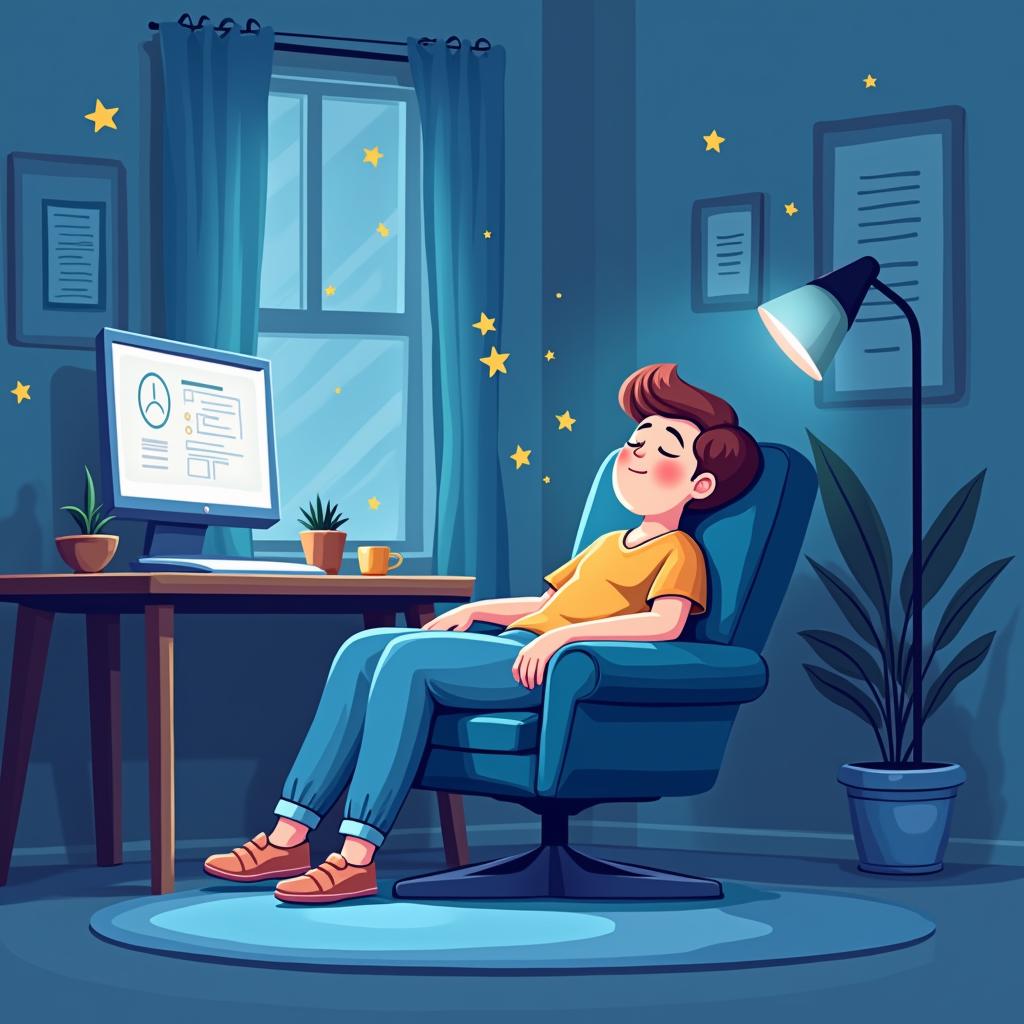
Short Naps (10–20 Minutes):
Short naps, also known as “power naps,” are optimal for a quick mental and energy boost. Research shows that a 10–20 minute nap helps you stay in lighter sleep stages, making it easier to wake up without grogginess, also known as sleep inertia.
This nap length offers a refreshing jolt of alertness, improved focus, and a better mood without disrupting nighttime sleep. Perfect for a midday pick-me-up, a short nap can leave you feeling revitalized without the risk of oversleeping.
Medium Naps (30 Minutes):
A 30-minute nap can provide deeper rest than a quick power nap, but it does come with a trade-off.
Since you may dip into deeper sleep stages, waking up from a 30-minute nap often leads to grogginess, or sleep inertia, which can last several minutes before you feel fully alert. However, once that initial grogginess fades, you’ll experience notable restorative effects, such as improved memory, reduced stress, and heightened cognitive functions.
Longer Naps (60–90 Minutes):
For those seeking a comprehensive recharge, a longer nap lasting between 60 and 90 minutes allows you to cycle through all stages of sleep, including slow-wave and REM (rapid eye movement) sleep.
This full sleep cycle can enhance creativity, boost memory retention, and improve problem-solving abilities. However, a nap of this length is more likely to leave you feeling disoriented upon waking and may interfere with nighttime sleep if taken too late in the day. While highly restorative, longer naps are best reserved for those who can afford the time and need a deeper recovery session.
How to Nap Effectively
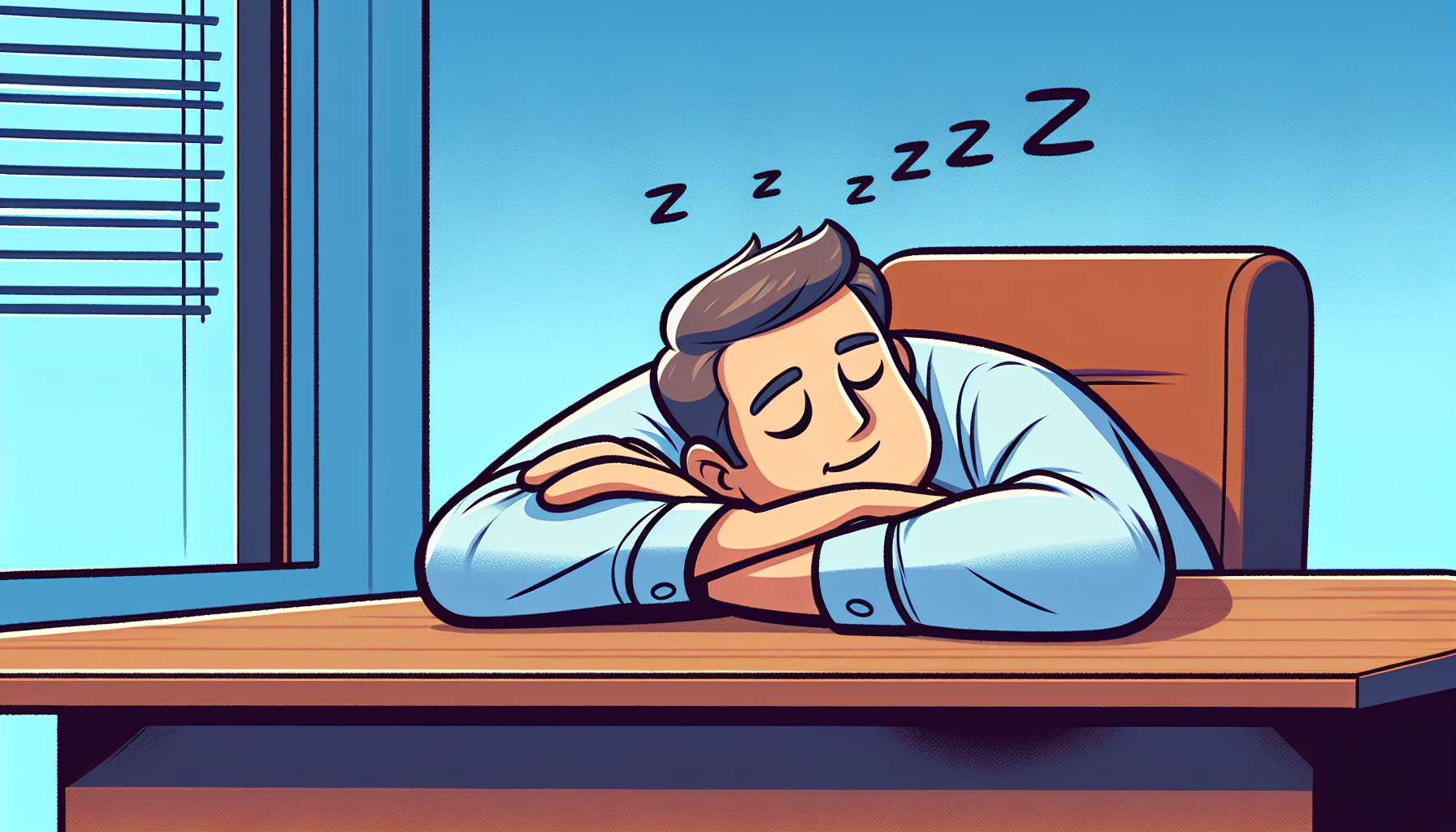
The best time for a power nap is typically in the early afternoon, between 1 p.m. and 3 p.m., when many people experience a natural dip in alertness due to their circadian rhythms.
This timing aligns with our body’s biological clock, making it easier to fall asleep and wake up refreshed without impacting nighttime sleep. Avoid late afternoon naps, as these can disrupt your sleep later in the evening.
Creating an ideal napping environment can make a world of difference. Here are a few tips for a nap-friendly space:
- Darkness: Dim the lights or use an eye mask to block out light, which can help you fall asleep faster.
- Quiet: Try using earplugs or white noise to minimize distractions. A quiet environment helps you relax and stay asleep.
- Comfort: Lie down in a comfortable position, preferably on a soft surface, and ensure the room is cool, ideally between 60–67°F (15–19°C), as lower temperatures can promote sleep quality.
To make the most of your nap, it helps to wind down beforehand. Here are some quick techniques:
- Deep Breathing: Practicing slow, deep breaths can help calm your nervous system and make it easier to fall asleep.
- Progressive Relaxation: Try tensing and relaxing each muscle group, starting from your toes and working your way up to your head. This technique reduces physical tension, making it easier to drift off.
- Mindful Detachment: Clear your mind of work or worries by focusing on the present. Guided relaxation apps or calming sounds can help you shift into a more restful state.
With the right timing, environment, and preparation, you’ll be set up for a power nap that leaves you feeling refreshed and ready to tackle the rest of your day!
Common Misconceptions About Napping
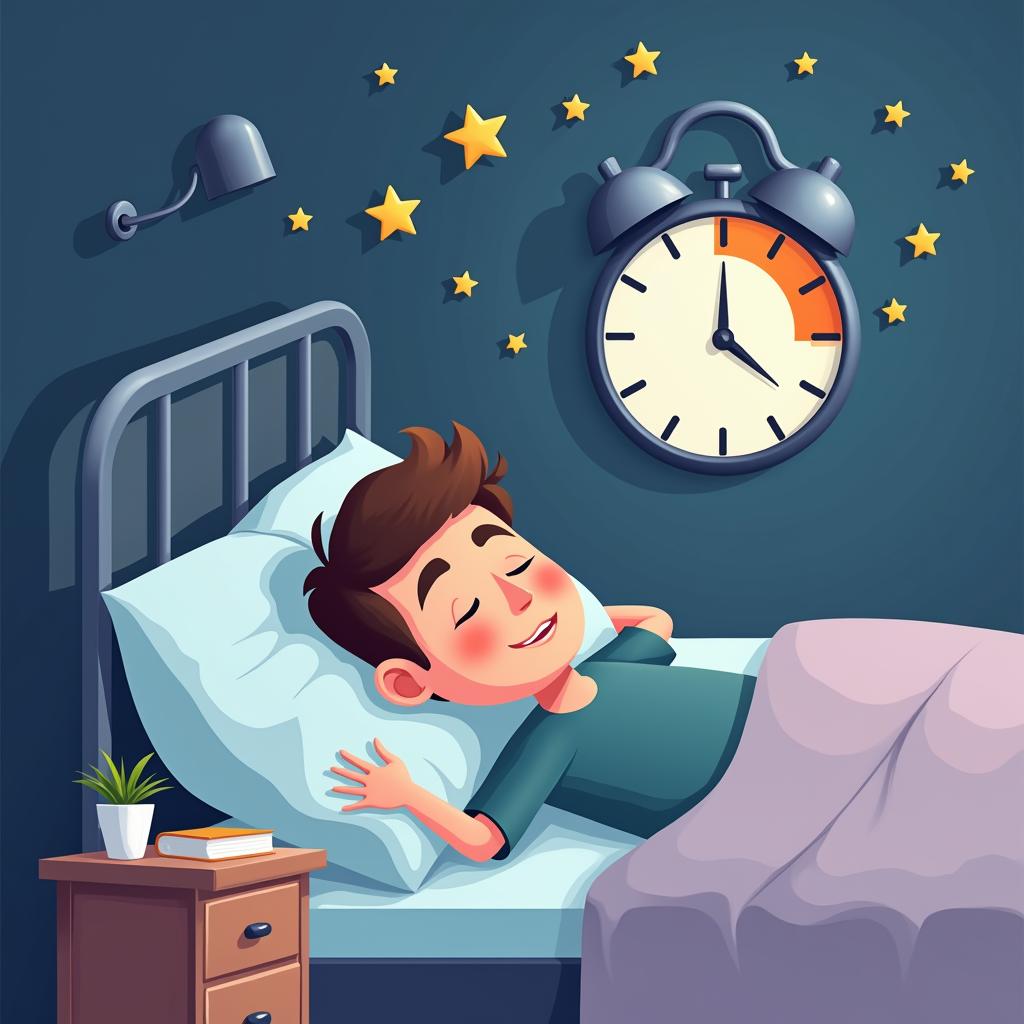
Myths vs. Facts:
Power napping often gets a bad reputation, with some viewing it as a sign of laziness or a lack of productivity. Let’s break down a few common myths about napping:
- Myth #1: “Napping makes you lazy.”
Fact: Far from laziness, a well-timed nap can actually make you more productive by improving alertness and concentration. Many high-performing individuals, including CEOs and athletes, swear by power naps to maintain peak performance. - Myth #2: “Napping ruins your nighttime sleep.”
Fact: While a long or late nap may interfere with nighttime sleep, a short, early afternoon nap is unlikely to cause issues. Studies show that naps under 30 minutes can improve focus without affecting nighttime rest. - Myth #3: “Naps are only for children and the elderly.”
Fact: Napping has cognitive benefits for all ages. Adults, particularly those in demanding jobs or busy schedules, can gain focus and mental clarity from a brief nap, making it useful for anyone.
Scientific Backing:
Science strongly supports the benefits of napping. A study published in Nature Neuroscience demonstrated that a 10–20 minute nap can significantly improve alertness, with additional research linking power naps to enhanced memory consolidation and problem-solving skills.
Additionally, a NASA study found that pilots who took a 26-minute nap experienced a 34% boost in performance and a 54% increase in alertness, proving that short naps are not only beneficial but also essential for maintaining focus in high-stakes environments.
By debunking these misconceptions, the science behind power napping highlights how it’s a tool for productivity, focus, and overall mental health.
Napping Techniques
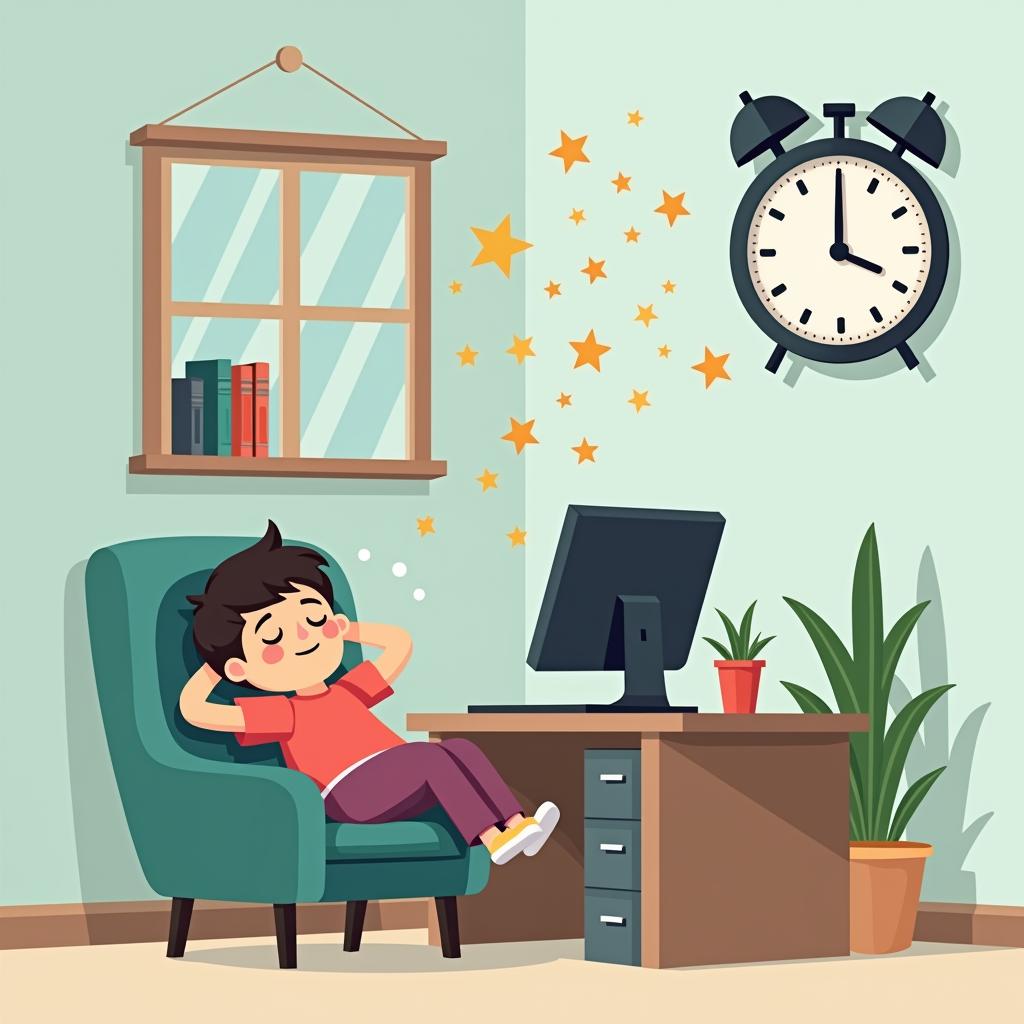
Types of Naps:
There are various napping techniques that cater to different needs, each with unique benefits. Here are some popular methods:
- Power Nap: Lasting 10–20 minutes, this is the classic quick nap that boosts energy and focus without delving into deeper sleep stages. Ideal for a midday refresh.
- Coffee Nap: This unique technique involves drinking a cup of coffee right before a short 20-minute nap. Since caffeine takes around 20 minutes to kick in, you’ll wake up feeling doubly alert, combining the effects of both the nap and the caffeine.
- Full Cycle Nap: A 90-minute nap that allows you to complete one full sleep cycle, including light, deep, and REM sleep. This nap can enhance creativity and problem-solving abilities but requires a longer break.
Timing Strategies:
The timing of your nap can make or break its effectiveness. Here’s how to time your nap based on your daily rhythm:
- Early Afternoon (1–3 p.m.): This is the ideal window for most people, aligning with a natural drop in alertness due to circadian rhythms. A nap at this time won’t interfere with nighttime sleep.
- Post-Lunch Dip: Many experience a post-lunch energy slump, making it a perfect time to sneak in a 10–20 minute power nap. This short nap can help you push through the afternoon without reaching for more caffeine.
- Pre-Evening Naps: If you have a late-night commitment, a nap around 5 p.m. can help you stay alert. Just keep it brief to avoid nighttime sleep interference.
Integrating Naps into a Busy Schedule:
For those with hectic days, finding time for a nap can be challenging. Here are some tips:
- Schedule It: Block off a quick 10–20 minutes in your calendar, just like you would for any other task. Treating it as part of your day can help you prioritize it.
- Micro-Naps: Even a 5–10 minute rest can be beneficial. If you’re short on time, set an alarm and find a quiet spot to recharge quickly.
- On-the-Go Techniques: For those constantly moving, apps with guided relaxation sessions can help you nap on public transit, at your desk, or in a quiet corner.
By choosing the right napping technique and timing it well, you can integrate refreshing naps into even the busiest of schedules, maximizing productivity and mental clarity.
Power Nap Target Audience
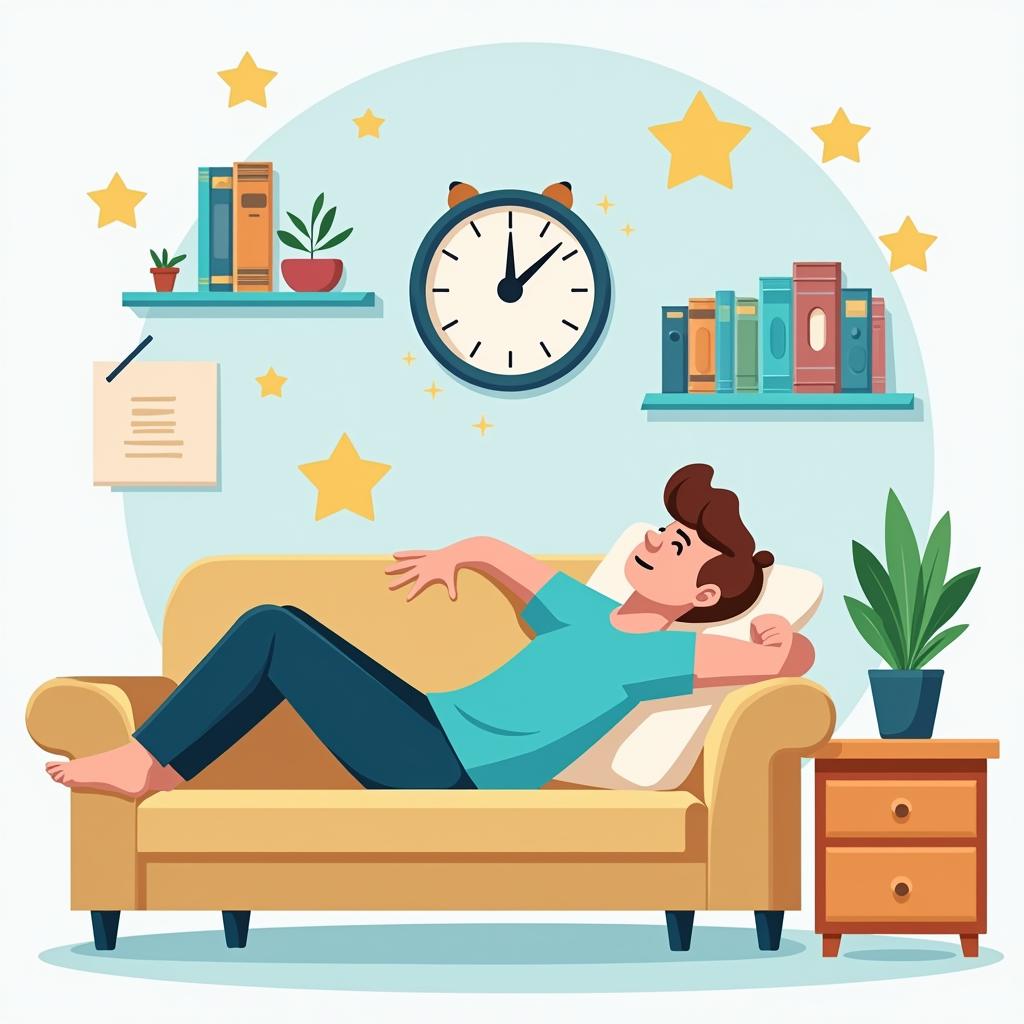
Who Benefits Most:
Power napping can be a game-changer for a wide range of people, particularly those with busy or demanding schedules. Here are some groups that benefit most from power naps:
- Students: Balancing study sessions, social commitments, and often part-time jobs, students can use a quick nap to boost focus and enhance memory retention, especially during exam seasons.
- Professionals: For those working in high-pressure environments, a short power nap can improve alertness and performance, helping reduce stress and prevent burnout.
- Parents: Between sleepless nights and busy days, parents, especially new ones, often need an energy boost. A short nap can provide the rest they need to stay attentive and keep up with their children’s needs.
- Shift Workers: Nurses, first responders, and those working irregular hours can benefit significantly from napping, as it helps counter the disruptions to their circadian rhythms.
- Entrepreneurs and Executives: Many leaders prioritize power naps to stay sharp, boost creativity, and maintain productivity over long hours. A short, strategic nap can help them tackle projects with renewed energy.
By embracing power naps, these groups can boost their productivity, focus, and overall well-being.
Cultural Perspectives on Napping
Global Napping Traditions:
Cultural perspectives on napping vary widely, with some societies incorporating naps into daily life as a means of improving health and productivity. Here are a few notable traditions:
- Siesta in Spain: The Spanish “siesta” is a time-honored tradition, where many people take a mid-afternoon break to rest, often following lunch. The siesta allows people to recharge and has historically been seen as a way to beat the midday heat and maintain productivity throughout the day.
- Inemuri in Japan: In Japan, the practice of inemuri, or “sleeping while present,” is widely accepted in both personal and professional settings. It’s common to see people napping on public transport or even at work, where it’s often considered a sign of dedication to one’s duties.
- Riposo in Italy: Similar to Spain’s siesta, Italy’s riposo is a rest period where many businesses close for a few hours in the afternoon, allowing workers to relax and recharge for the second half of the day.
Trends in Napping:
Modern workplaces are beginning to recognize the benefits of naps, with many companies introducing nap pods, quiet rooms, or even dedicated nap times. Tech companies like Google and Nike have pioneered nap-friendly environments, allowing employees to take short naps during the day. Research shows that these policies lead to increased productivity, improved mental health, and a more positive workplace culture. As more companies embrace flexible schedules and employee well-being initiatives, napping may become an essential part of the modern workday.
By understanding these cultural and workplace trends, we see that napping isn’t just about rest—it’s a valuable tool for maintaining productivity and mental wellness across various environments and lifestyles.
Napping in the Context of Sleep Disorders
Sleep Disorders:
For individuals dealing with sleep disorders, napping can have both potential benefits and drawbacks. Here’s how it may impact some common sleep conditions:
- Insomnia: For people with insomnia, napping during the day can sometimes make it harder to fall asleep at night. Since insomnia often involves difficulty with nighttime sleep, napping may exacerbate the problem by reducing the body’s drive to sleep. However, some studies suggest that a brief nap earlier in the day (10–15 minutes) can provide an energy boost without significantly impacting nighttime sleep. The key is to avoid naps in the late afternoon or evening, which can further disrupt sleep patterns.
- Sleep Apnea: Sleep apnea sufferers often experience fragmented nighttime sleep due to frequent interruptions in breathing. For them, a daytime nap can provide some relief by offering a chance for additional rest, helping reduce the effects of sleep deprivation. However, it’s important for individuals with sleep apnea to avoid longer naps that dip into deeper sleep stages, as this can increase the risk of airway obstruction even during a nap. Short, supervised naps or naps with appropriate sleep apnea treatment (like a CPAP device) are typically recommended.
Consultation Advice:
For anyone experiencing chronic fatigue or unrefreshing sleep, it’s essential to consult a healthcare professional. Persistent sleep difficulties can indicate underlying health issues that go beyond what a nap can address. Conditions like narcolepsy, chronic fatigue syndrome, or unregulated insomnia benefit from professional diagnosis and treatment. A doctor or sleep specialist can offer guidance on managing these conditions, incorporating naps safely, and determining personalized sleep strategies that improve both daytime alertness and nighttime rest.
Napping, when approached correctly, can be an excellent supplemental tool for managing energy levels and mental clarity, but consulting with a healthcare provider ensures that those with sleep disorders can find the best approach tailored to their needs.
The Science Behind Napping
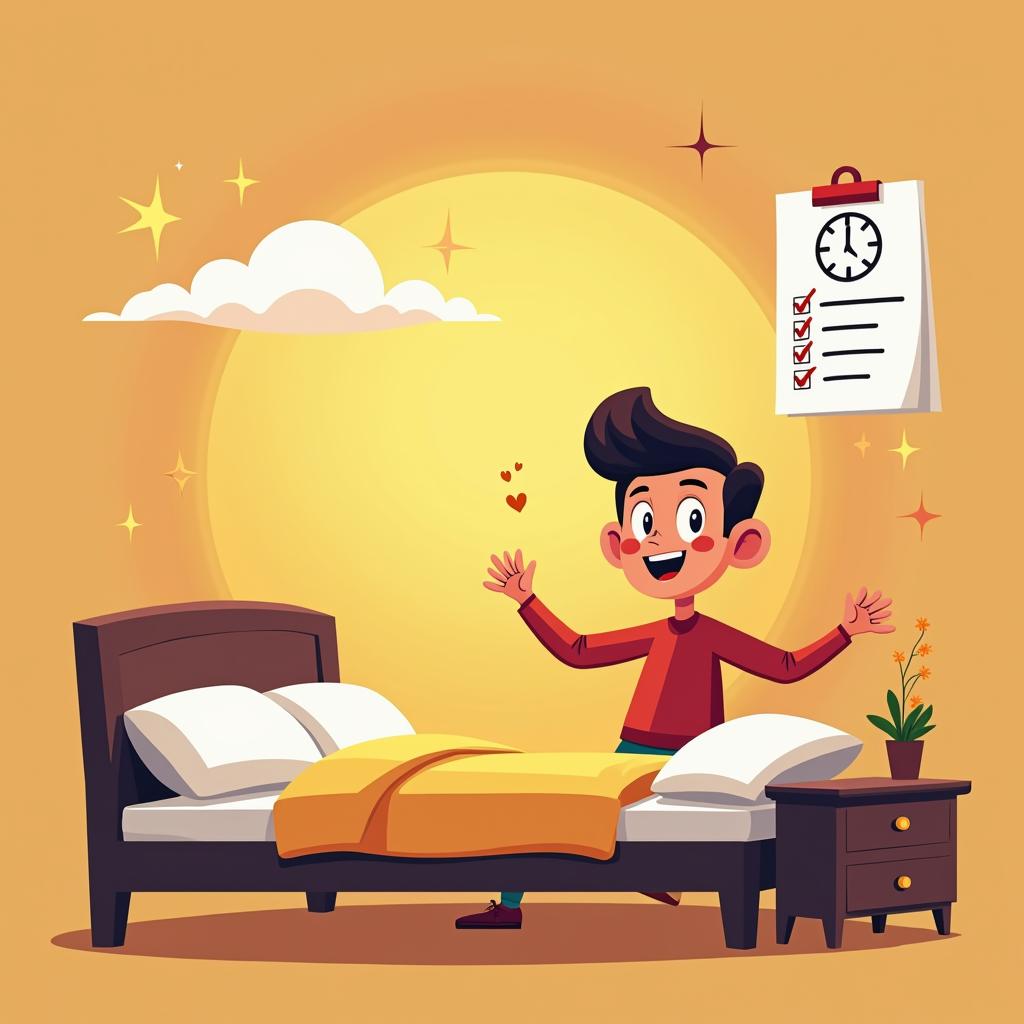
Brain Function:
Napping is more than just a quick energy boost; it plays a crucial role in enhancing brain function, particularly in memory consolidation and learning. When we nap, our brain processes information we’ve recently absorbed, allowing it to “file away” memories and improve retention. Studies have shown that even a brief nap can lead to significant improvements in learning, creativity, and problem-solving abilities. The hippocampus, a brain region tied to memory formation, is especially active during short naps, helping to store and organize memories more effectively. In fact, research indicates that a 10–20 minute nap can lead to sharper recall and quicker learning.
Sleep Stages:
The effectiveness of a nap depends heavily on the sleep stages we enter, which are influenced by the nap’s duration:
- Stage 1 (1–5 minutes): This is the lightest stage of sleep, where we transition from wakefulness to rest. It’s a quick stage that helps the body begin to relax and prepare for deeper sleep.
- Stage 2 (5–20 minutes): In this stage, heart rate and brain activity slow down, and our muscles begin to relax. A 10–20 minute nap that ends in Stage 2 is ideal for a quick mental boost without the risk of sleep inertia (grogginess upon waking). This type of nap is perfect for those who need an immediate refresh without deep sleep effects.
- Stage 3 and 4 (20–60 minutes): These stages represent deeper sleep, known as slow-wave sleep, where the body undergoes more intensive restoration, including muscle recovery and immune system strengthening. While a 30-minute nap may provide physical benefits, it also increases the risk of sleep inertia, leaving you groggy upon waking. However, a full 60-minute nap allows you to reach slow-wave sleep, offering a more complete sense of rest but may require some time to fully wake up.
- REM Sleep (60–90 minutes): Rapid Eye Movement (REM) sleep is the final stage in a typical sleep cycle and is associated with vivid dreaming, memory consolidation, and emotional processing. A full 90-minute nap typically allows one complete sleep cycle, from light sleep through deep sleep to REM. This duration provides substantial cognitive benefits, making it ideal for creative tasks, problem-solving, and emotional regulation.
By understanding how different sleep stages impact our brain and body, we can tailor nap lengths to meet our specific needs. Whether it’s a quick 10–20 minute nap for a refresh or a full 90-minute cycle to enhance creativity and learning, the science behind napping underscores its value as a powerful tool for mental and physical rejuvenation.
Real-Life Experiences
Testimonials:
Real-life experiences can highlight the transformative power of napping. Here are a few testimonials from individuals who have successfully integrated naps into their daily routines:
- Jessica, a college student: “Before I started napping, I struggled to stay awake during my afternoon lectures. Now, a quick 20-minute nap between classes has become my secret weapon. I wake up refreshed and ready to tackle my assignments!”
- Mark, a software engineer: “Working long hours in front of a screen can be exhausting. I started taking power naps in my office during lunch breaks, and I can’t believe the difference it’s made. I feel sharper and more productive in the afternoon, and I even notice I make fewer mistakes!”
- Sara, a busy parent: “As a mom of three, my sleep schedule is all over the place. I’ve learned to sneak in short naps while my kids nap, and it’s been a game-changer. Those few minutes of rest help me recharge and manage the chaos better.”
Case Studies:
Several organizations and schools have recognized the benefits of napping and implemented nap policies to enhance productivity and well-being:
- Google: Known for its innovative work environment, Google offers nap pods in its offices, allowing employees to take short breaks to recharge. The company has reported increased productivity and employee satisfaction as a direct result of these facilities.
- University of California, Berkeley: This campus has adopted a “nap culture,” encouraging students to utilize designated nap spaces. Studies conducted on campus showed that students who napped improved their focus and academic performance, particularly during exam periods.
- Zappos: The online retailer is famous for its employee-centric policies, including flexible nap times. Employees are encouraged to listen to their bodies, leading to higher morale and job satisfaction. Feedback has indicated that napping contributes significantly to a more energized and engaged workforce.
These testimonials and case studies illustrate how integrating naps into daily life can lead to substantial benefits in both personal well-being and workplace productivity.
Tools and Resources
Apps and Gadgets:
To help you optimize your napping routine, consider these apps and gadgets designed to track sleep cycles or set nap timers:
- Sleep Cycle: This app analyzes your sleep patterns and wakes you up during the lightest phase of your sleep cycle, ensuring you feel more refreshed. It’s great for both nighttime sleep and power naps.
- Pzizz: Using a combination of music, voiceovers, and sound effects, Pzizz helps you fall asleep quickly and wake up feeling refreshed. It offers specific modules for napping.
- Power Nap Timer: A simple yet effective app that allows you to set a timer for your desired nap length, ensuring you don’t oversleep.
- Oura Ring: This wearable device tracks your sleep patterns, heart rate, and recovery. It provides insights into your sleep quality, helping you optimize both your nighttime rest and napping habits.
Guided Napping:
For those who prefer a more structured approach to napping, consider exploring these audio resources or videos for guided relaxation:
- YouTube Channels: Many channels offer guided napping sessions with soothing sounds and relaxing voiceovers to help you drift off. Search for channels focused on sleep meditation or relaxation.
- Headspace: This meditation app includes specific guided sessions aimed at napping and relaxation, helping you wind down quickly.
- Calm: With its extensive library of guided meditations and sleep stories, Calm can be a useful resource for creating a calming environment for napping.
By leveraging these tools and resources, you can enhance your napping experience, ensuring you reap the maximum benefits for your productivity and well-being.
FAQs
Does napping affect nighttime sleep?
Napping can impact nighttime sleep, especially if you nap for too long or too late in the day. Short naps (10–20 minutes) taken earlier in the day are less likely to interfere with your ability to fall asleep at night. However, longer naps, particularly those taken in the late afternoon or evening, can disrupt your circadian rhythm, making it harder to fall asleep at your regular bedtime.
How long should I nap for the best results?
The ideal nap length can vary depending on your needs. A short nap of 10–20 minutes is great for a quick energy boost, while a 30-minute nap can offer restorative effects but may come with a risk of grogginess. A full sleep cycle nap of 60–90 minutes allows you to enter deeper sleep and provides substantial benefits, including improved creativity and memory, but it might take a bit longer to wake up fully.
Is it normal to feel groggy after a nap?
Feeling groggy after a nap, known as sleep inertia, is common, especially if you wake up from a deep sleep stage. To minimize this effect, aim for shorter naps or set an alarm to wake you during lighter sleep stages. Over time, as you become accustomed to napping, this grogginess may decrease.
Can napping help with productivity?
Absolutely! Numerous studies show that power naps can enhance alertness, improve mood, and boost overall productivity. By incorporating napping into your routine, you can combat fatigue and increase your focus for tasks ahead.
Who should avoid napping?
While napping can be beneficial for most people, those with specific sleep disorders like severe insomnia or sleep apnea should consult a healthcare professional before integrating naps into their routine. Additionally, if you find that napping negatively impacts your nighttime sleep, it may be best to reconsider your approach.
Conclusion
Power napping is not a one-size-fits-all solution; it offers flexibility and can be tailored to fit your unique lifestyle and needs. Whether you’re a busy professional, a student, or a parent, finding the right nap length and timing can enhance your productivity, mood, and overall well-being.
As you explore the world of napping, listen to your body and adjust your habits accordingly. Embrace the power of napping as a simple yet effective tool to recharge your mind and body, ensuring you can tackle each day with renewed energy and focus. Happy napping!

